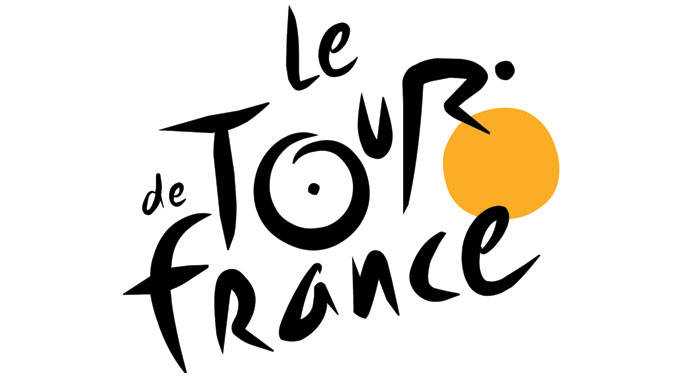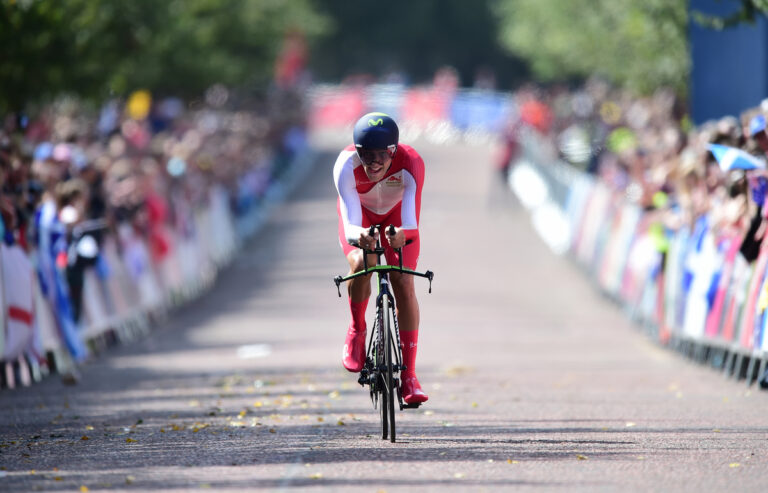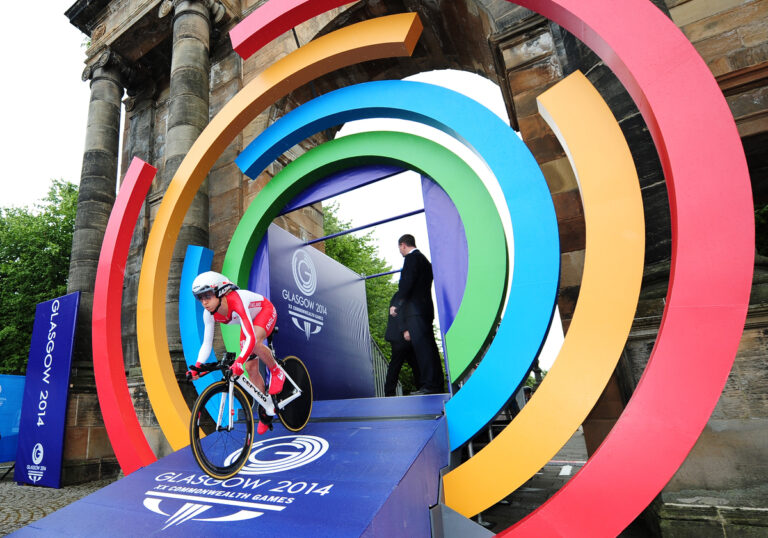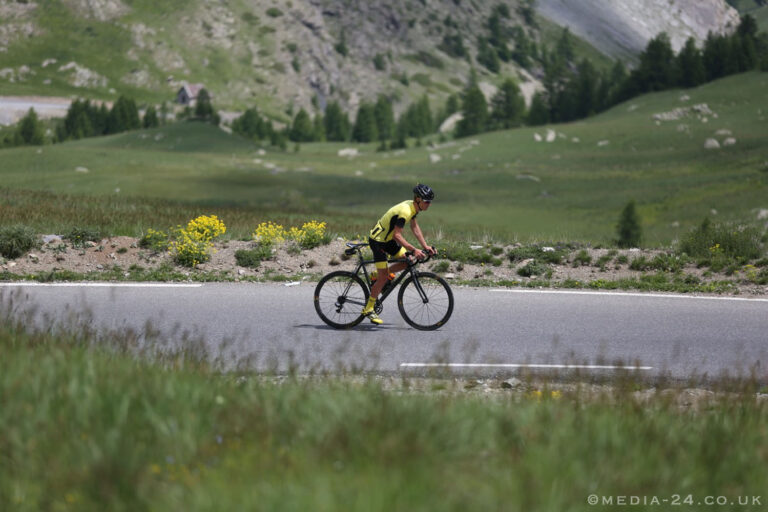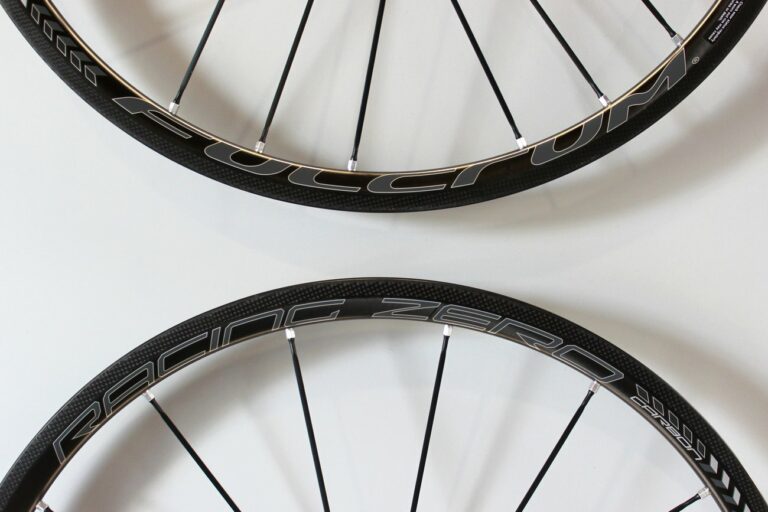Vincenzo Nibali (Astana) has won the second stage of the 2014 Tour de France with a perfectly judged move in the closing kilometres that saw him escape from fellow GC contenders with a display of aggression and panache that will serve as a timely reminder that he remains among the very best in the world.
The Italian claimed his first Tour de France stage victory and with it the race lead after the race exploded on the brutal 30 per cent gradient of Jenkin Road, when after a day of attack and counter attack among lesser talents, the pre-race favourites suddenly made their presence felt.
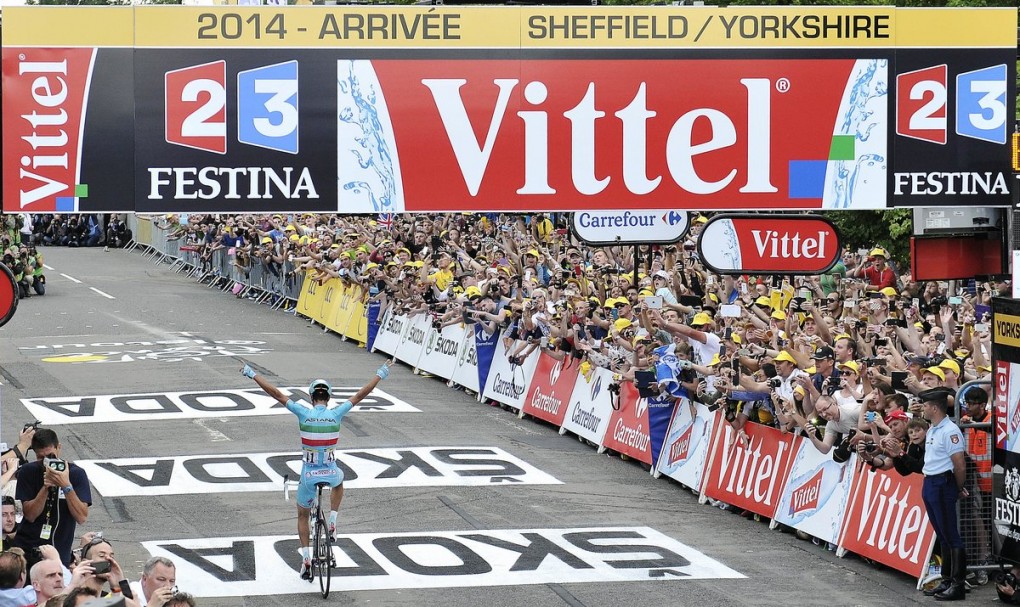
Alberto Contador (Tinkoff-Saxo) danced to the head of the field with an insouciant swagger as Jenkin Road reared up ahead of a 30-strong leading group of elite riders. Nibali and reigning champion, Chris Froome (Team Sky), were alert to the danger presented by the Spaniard, and it was Froome who moments later lit the blue touch paper, attacking as the summit approached and sparking a momentary panic among his closest rivals.
He was pegged back on the high speed descent of the “Côte de Jenkin Road”, with Peter Sagan (Cannondale), Tejay Van Garderen (BMC Racing), and Romain Bardet (Ag2r-La Mondiale) among those who tried their luck in the final kilometres with a display of aggressive racing that will live long in the memory of any who witnessed it.
But it was Nibali who made the decisive move, mixing guile and power to ride clear of the elite chasing pack on a parcours that made Liege-Bastogne-Liege look pallid by comparison. Huge crowds again lined the route, with Holme Moss taking on the aspect of an Alpine summit, and mile-upon-mile of the road into Sheffield lined by spectators stood shoulder-to-shoulder.
The opening stage had already made the Yorkshire Grand Départ an overwhelming success, but today’s second etape was a classic in every sense. Britain has claimed a seat at world cycling’s top table, and this time not by the success of its riders. If stage one belonged to the crowds, today was a triumph for the course. Tomorrow’s third stage, from Cambridge to London, has much to live up to.
The stage in detail
Only Mark Cavendish (Omega Pharma-Quickstep) was absent from the start line at York Racecourse, as 197 riders set out for the demanding second stage.
On a course seemingly fit for a breakaway, it didn’t take long for six riders to earn a gap with Blel Kadri (Ag2r-La Mondiale) – an early owner of the King of the Mountains tunic in last year’s race – among them.
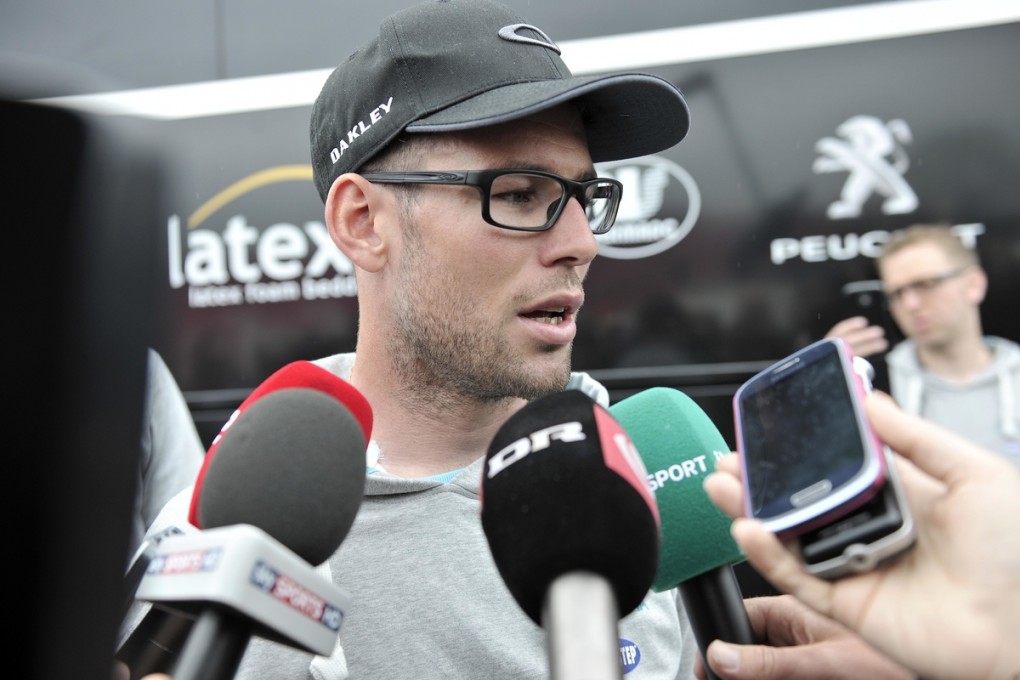
Cyril Lemoine (Cofidis), Davide De la Cruz (Team NetApp-Endura), Perrig Quemeneur (Team Europcar), Matthew Busche (Trek Factory Racing) and Armindo Fonseca (Bretagne-Seche Environnement) joined him in the break, but their advantage was never allowed to grow too great.
Indeed, the tough, hilly course soon ended the chances of the breakaway staying clear, as several of the favourites’ teams led the chase.
Sagan, Richie Porte (Team Sky) and Nicolas Roche (Tinkoff-Saxo) all found themselves briefly losing touch with the bunch after suffering mechanicals, but it was not until Holme Moss that the race burst into life.
The Côte de Holme Moss
With only Kadri remaining up the road, Thomas Voeckler (Team Europcar) attacked at the foot of the second category climb, dancing on the pedals and quickly finding a rhythm.
Kadri responded by accelerating again, maintaining his advantage, while Team Sky’s Vasili Kiryienka and Geraint Thomas maintained a watching brief at the head of the bunch.
Voeckler’s move prompted several other counter-attacks, with Nicolas Edet (Cofidis) – who was part of the original stage one break – among the first to go, joined by Tony Martin (Omega Pharma-Quickstep), Marcus Burghardt (BMC Racing) and Cyril Gautier (Team Europcar).

At the back of the peloton, the undulating course soon put paid to the sprinters’ chances, as had been expected, with Andre Greipel (Lotto-Belisol) and Arnaud Demare (FDJ.fr) among the first riders to lose contact.
Yellow jersey Marcel Kittel (Giant-Shimano) was also dropped, as were Mark Renshaw (Omega Pharma-Quickstep) and Elia Viviani (Cannondale), as Tinkoff-Saxo and Team Sky drove the peloton over the uncategorised incline of Cragg Vale.
Tom Jelte Slagter was first over the third category Côte de Midhopestones, ably supported by Garmin-Sharp colleagues, Andrew Talansky and Alex Howes. They were quickly joined by an elite group, however, containing Froome, Porte, and Thomas, and Movistar leader, Alejandro Valverde, among others.
Slagter continued to drop the hammer, but with less than 30km remaining and the Côte de Bradfield fast approaching, Team Sky flexed its muscles for the first time, setting a ferocious tempo that caused huge splits among the riders behind. Marcel Kittel (Giant-Shimano), meanwhile, was more than five minutes behind, suffering, and preparing to end his brief sojourn in the maillot jaune.
The kilometre-long Bradfield Hill, a vicious slope with an average gradient of 7.4 per cent, saw Thomas again set a tempo that even some of his own team-mates struggled to match. David Lopez was among those who fell behind as the Welshman drove on remorselessly.

Giant crowds, a feature of this Grand Départ from the opening kilometres, were again a feature, lending Bradfield Hill the aspect of an Alpine summit. Astana’s Andre Grivko, who had spent the latter part of the ascent on Thomas’ shoulder, passed the Welshman as they crested the hill, but Thomas quickly resumed pole position on the descent. If Sky’s intention had been to show that they would not be bullied on stages that might surprise less attendant GC contenders, they were close to accomplishing their mission with just 24km remaining.
The Sky-led leading group swept through Worrals at pace, with Thomas again the man on the front. The twisting, residential road, taken at high speed on a steeply pitched descent, was meat and drink to the Welshman, but as the road flattened, three Cannondale riders swept past, one after the other in the Italian squad’s first show of intent for Sagan.
As the road pitched upwards again into Oughtibridge Hill, Thomas resumed his position, but as the summit approached, it was a French duo that went clear: Europcar’s Pierre Rolland, and Ag2r-La Mondiale’s Jean Christophe Peraud. The pair found themselves alone, and with clear road ahead wasted little time in attacking another technical descent.
The peloton was in hot pursuit, and Rolland was soon flicking his elbow and raising his arm at Peraud, indicating to his countryman that unless he worked, their escape would soon end. Kittel, meanwhile, gave yet another sign of a rider refreshingly free from self importance, cupping a hand to his ear as he encountered the deafening noise of the crowds at the summit of Oughtibridge Hill, and shaking his head in mock disbelief. With nearly 12 minutes separating him from the peloton, his display of humility was apt.
Rolland and Peraud clung on to a perilous 12-second advantage, and after some increasingly desperate looks behind from both men, Rolland attempted to ride clear. Swiftly realising that his hopes of achieving anything alone were less than zero, Peraud scampered after his compatriot.
Massive crowds continued to line the route as the road rose again, and this time Rolland, his patience exhausted if not his legs, dropped Peraud. His effort had ‘too little, too late’ written all over it: the diminished leading group already had him in sight, and while he gritted his teeth, the Frenchman found himself the focus of unwanted attention from an increasingly energised Cannondale team.
Thomas, seemingly indefatigable, but suddenly swamped by the team in green, rode second wheel, looking back occasionally to check on his leader, Froome. Tinkoff-Saxo had begun to mass near the front too, menacingly for Sky, while Rolland, refusing to be cowed, powered on ahead. His descending prowess is no secret, and he needed all of his experience to survive the rough British roads.
If he needed motivation, he needed only to look either side of him. As he passed beneath the 10km to go kite, the crowds seemed if anything to have swelled to still greater proportions. Mile after mile of pavement was lined by spectators stood shoulder to shoulder. Even the most innocuous stretch of road had been colonised. Their cheers were not enough to save Rolland, however. With almost exactly 8km remaining, he was caught by a peloton driven by Orica-GreenEDGE, and, inevitably, Thomas. Michal Albasini (Orica-GreenEDGE) rode furiously on the front, while team leader, Simon Gerrans, recovering from abrasions suffered yesterday in the crash with Mark Cavendish, pedaled with relative ease.
The Côte de Jenkin Road
Then it happened. Jenkin Road, long anticipated, rose up as if from nowhere, and, as if finding themselves on Alpine terrain, Contador, Nibali, and Froome moved to the front. Contador danced with all of his old swagger, but when he raised the tempo, Nibali fastened on to his wheel. Froome remained seated, but suddenly attacked, unable it seemed to help himself. Panic spread among the contenders, with Van Garderen the first to respond. Sagan was also alert to the threat, and eased into position.
After a second injection of pace, Froome led the favourites on to the descent, but it was Astana’s Jakob Fuglsang, unwilling to let a chance slip for his team leader, who attacked at full speed on the sharply falling road, muscling his way past Froome as a means of controlling the threat.
Sagan the upped the ante, sitting on the top tube, and leading the GC contenders at impossible speed into a treacherous left hand corner. As they emerged, hearts in mouths, Sagan emerged with a lead of five bike lengths and pushed hard. Fuglsang was the next to strike, passing Sagan, but taking Van Garderen with him. Back on flat roads, Froome looked momentarily lost, and as he swooped across the road, it was Lotto Belisol’s Jurgen Van Den Broeck who instilled a momentary sense of claim by bridging to Van Garderen and Fuglsang.
Romain Bardet (Ag2r-La Mondiale) was the next to launch, but then Nibali counter-attacked with a ferocity that looked decisive. Using the tight corners to his advantage, he swiftly disappeared from view, and by the time the peloton had him back in sight with 1km to go, he was 500m up the road.
The GC group, suddenly shelled, looked at each other in panic, while Nibali gritted his teeth, hugged the barriers, and kicked hard. Sagan, desperation written all over him, launched again in an attempt to bridge, with Froome, astonishingly, the man to catch him. The defending champion suddenly appeared the most likely to reach Nibali, but wasted time looking behind, affording the Astana leader the luxury of an untroubled finish.
Sitting up and pointing at the Italian stripes on his chest, Nibali smiled and gave a small nod of satisfaction. It had been a sensational ride and a reminder to the bookies’ favourites, Froome and Contador, that he deserves to be considered capable of winning this 101st Tour de France.
Pictures used with kind permission of SWPix.com
Tour de France 2014: stage two – result
1) Vincenzo Nibali (ITA) – Astana – 5.08.36
2) Greg Van Avermaet (BEL) – BMC Racing +2″
3) Michal Kwiatkowski (POL) – Omega Pharma-Quickstep – ST
4) Peter Sagan (SVK) – Cannondale
5) Tony Gallopin (FRA) – Lotto-Belisol
6) Michal Albasini (SUI) – Orica-GreenEDGE
7) Andrew Talansky (USA) – Garmin-Sharp
8) Bauke Mollema (NED) – Belkin
9) Tejay Van Garderen (USA) – BMC Racing
10) Romain Bardet (FRA) – Ag2r-La Mondiale
General classification
1) Vincenzo Nibali (ITA) – Astana – 9.52.43
2) Peter Sagan (SVK) – Cannondale +2″
3) Greg Van Avermaet (BEL) – BMC Racing -ST
4) Michal Albasini (SUI) – Orica-GreenEDGE
5) Chris Froome (GBR) – Team Sky
6) Bauke Mollema (NED) – Belkin
7) Jurgen Van Den Broeck (BEL) – Lotto-Beliosl
8) Alberto Contador (ESP) – Tinkoff-Saxo
9)Tejay Van Garderen (USA) – BMC Racing
10) Jakob Fuglsang (DEN) – Astana

